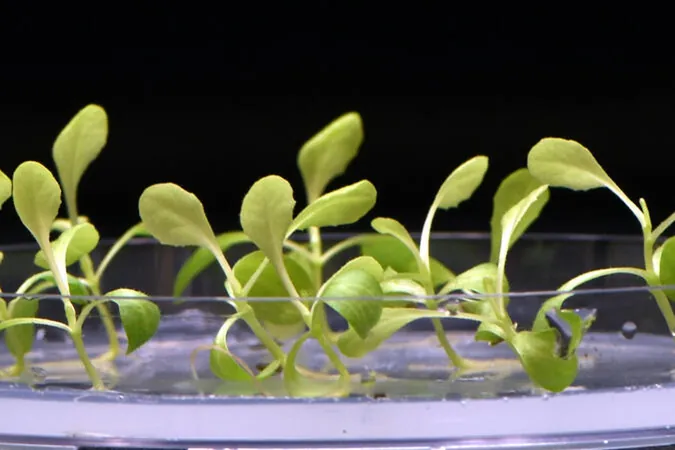
Breakthrough in Renewable Energy: Scientists Develop Game-Changer in Artificial Photosynthesis
2025-08-27
Author: Siti
A Leap Toward Efficient Fuel Production
A groundbreaking advancement in renewable energy may soon turn the dream of artificial photosynthesis into reality. Researchers have unveiled a new molecule that captures sunlight in a way similar to plants, potentially revolutionizing how we create and store carbon-neutral fuels.
Unlocking the Secrets of Nature
For decades, scientists have struggled with one major hurdle in artificial photosynthesis: the ability to store sufficient energy for fuel production. Unlike traditional renewables that generate electricity, this innovative approach could produce fuels suitable for industries like aviation and shipping, where electrification proves challenging.
Unveiling the Molecule
A team from the University of Basel recently published their study in *Nature Chemistry*, revealing a meticulously designed molecule capable of holding four energy charges—two positive and two negative. This multi-charge capability is crucial for initiating chemical reactions, such as splitting water into hydrogen and oxygen, essential for generating usable fuels.
Mimicking Nature with Dim Light
Previous attempts to replicate photosynthesis required bright laser light far brighter than natural sunlight. However, the new molecule thrives under dim light conditions, resembling the natural environment. This discovery could mean harnessing solar energy is closer than ever, as doctoral student Mathis Brändlin explains, "We are already approaching the intensity of sunlight."
A Piece of the Clean Energy Puzzle
While this significant advance doesn't yet equate to a fully functioning artificial photosynthesis system, Professor Oliver Wenger emphasizes, "we have identified and implemented an important piece of the puzzle." This milestone is a pivotal step toward realizing the potential of carbon-neutral energy.
The Promise of Holy Grail Fuels
Artificial photosynthesis is often dubbed the holy grail of clean energy. This process could produce fuels that do not add new carbon to the atmosphere, releasing only the carbon dioxide that was absorbed during production. Additionally, these liquid fuels can be easily transported using existing infrastructure, offering a viable alternative to fossil fuels.
Addressing Global Energy Demands
As global energy needs continue to rise and fossil fuels dominate sectors like aviation, the quest for storable, carbon-neutral fuels is becoming ever more urgent. Pilot projects in Europe, Japan, and the United States, though still mostly in experimental stages, are paving the way for future innovation.
Looking Ahead to a Sustainable Future
With nations investing heavily in research—from Japan’s focus on photocatalysts to the European Union's 'Sun-to-Liquid' initiatives—the hope is that this research will pave the way to a sustainable energy future. Wenger concludes, "We hope this contribution will lead to new prospects for clean energy solutions."


 Brasil (PT)
Brasil (PT)
 Canada (EN)
Canada (EN)
 Chile (ES)
Chile (ES)
 Česko (CS)
Česko (CS)
 대한민국 (KO)
대한민국 (KO)
 España (ES)
España (ES)
 France (FR)
France (FR)
 Hong Kong (EN)
Hong Kong (EN)
 Italia (IT)
Italia (IT)
 日本 (JA)
日本 (JA)
 Magyarország (HU)
Magyarország (HU)
 Norge (NO)
Norge (NO)
 Polska (PL)
Polska (PL)
 Schweiz (DE)
Schweiz (DE)
 Singapore (EN)
Singapore (EN)
 Sverige (SV)
Sverige (SV)
 Suomi (FI)
Suomi (FI)
 Türkiye (TR)
Türkiye (TR)
 الإمارات العربية المتحدة (AR)
الإمارات العربية المتحدة (AR)